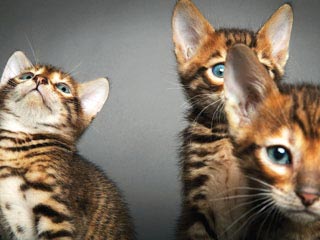A drone photographer captured the wild moment when a shark charged into a giant school of stingrays off the coast of Florida.
Although there appears to be thousands of them, the shark went away hungry.
A collection of digital wonders and some other stuff
A drone photographer captured the wild moment when a shark charged into a giant school of stingrays off the coast of Florida.
Although there appears to be thousands of them, the shark went away hungry.
One of my good friends, David Logue, was on this week’s episode of Quirks and Quarks.
The interview is about cricket songs. We tested the H that aggressive signals mitigate the costs of fighting by muting and looking at a population that had lost its song. Turns out they fight like crazy if they can’t signal.
Quirks and Quarks April 17, 2010
From Quirks and Quarks Website:
Silent means Deadly
When crickets fight, there’s a lot of noise. Not just the clashing of mandibles and the clicking of legs, but the cricket equivalent of “trash talking” as well. Dr. David Logue, a biologist at the University of Puerto Rico and his colleagues from the University of Lethbridge in Alberta, were interested in what would happen when the crickets couldn’t make the sounds associated with their fights. What they saw was mayhem. Crickets, who were either naturally silent or had their noisemakers removed, fought viciously, longer, and more violently than those full of sound and fury. Apparently, these insects use bluster not to provoke, but to avoid violence.
Just add salt and the magic begins!
Frog Legs Dancing with a Little Salt | YouTube
I understand this happens because salt contains sodium ions which, when in contact with the cells, change the electrical potential within each cell. This change is the ‘signal’ for the muscles to contract. Energy is stored in the muscles in the form of ATP (Adenosine-5′-triphosphate) and the twitching stops when the ATP runs out.
Apparently this is more likely to happen with cold blooded animals (like frogs) because they do not take on rigor mortis as quickly as warm-blooded animals (chicken, for example).
(via)
Check out this tremendously interesting x-ray image made for speech research by Christine Ericsdotter:

Christine Ericsdotter says “bÃ¥de” (“both”). The sequence is an excerpt from a 20 second X-Ray film registred at the Danderyd Hospital in Stockholm in March 1997.
And a couple more: Continue reading “X-Ray Animated Gifs”
Biologist Robert Full explains how bio-mimicry not only teaches us how to make better robots but also helps us to better understand the world around us. Case in point, while investigating how to replicate gecko feet and in turn to make a gecko robot, Full’s team discovered that the machine didn’t operate well without a tail. When his team asked Full what was the purpose of the gecko’s tail, to his surprise, he wasn’t quite sure, so he set out to investigate. He discovered an entire universe of surprises, which he describes in this TED talk.
One of the senior curators at the MoMA had to end the life of a tiny coat built out of living mouse stem cells after it grew so fast that the cells began to clog the incubator.
From the New York Times article:
One of the strangest exhibits at the opening of “Design and the Elastic Mind,” the very strange show at the Museum of Modern Art in New York that explores the territory where design meets science, was a teeny coat made out of living mouse stem cells. The “victimless leather” was kept alive in an incubator with nutrients, unsettlingly alive. Until recently, that is.
Paola Antonelli, a senior curator at the museum, had to kill the coat. “It was growing too much,” she said in an interview from a conference in Belgrade. The cells were multiplying so fast that the incubator was beginning to clog. Also, a sleeve was falling off. So after checking with the coat’s creators, a group known as SymbioticA, at the School of Anatomy & Human Biology at the University of Western Australia in Perth, she had the nutrients to the cells stopped.
This is just a taste of the interesting kinds of developments we’re going to see from biological science in the near future.
(via)
 One of the most notorious birds of prey, the Golden Eagle develops a wingspan averaging over 2 m (7 ft) and up to 1 m (3 ft) in body length.
One of the most notorious birds of prey, the Golden Eagle develops a wingspan averaging over 2 m (7 ft) and up to 1 m (3 ft) in body length.
If you haven’t already seen it, the following video demonstrates the bird’s vicious killing technique as it literally plucks goats from the side of a mountain sending them tumbling to their doom.
If you’re at all sensitive about seeing animals die, you really shouldn’t watch this. At one point it looks like the goats might get even, and I hate to spoil it, but a few minutes later the bird is still snatching up goats for breakfast.
Disturbing video of the Golden Eagle throwing goats off cliffs
 A few years ago I read an article about a new breed of designer cat. These felines, dubbed the “toyger” were being breed to look like wild tigers. Checking back now on the progress of the breed is impressive.
A few years ago I read an article about a new breed of designer cat. These felines, dubbed the “toyger” were being breed to look like wild tigers. Checking back now on the progress of the breed is impressive.
Currently the features demonstrated in the toyger include a bright orange coat, dark markings over their eyes and stripes that mimic their wild counterparts. I would love to have one of these little guys prowling through my kitchen.
Though currently none of the new breed possess all of the criteria for a perfect toyger, some of the cats are incredibly close. Smart, playful, and affectionate, the cats themselves are great pets. Though, as you can see from the photos, the kittens may kill you with cuteness.
This remarkable video from the documentary Ants! Nature’s Secret Power shows a glimpse into the fascinating world of the ant. The narrator describes the intricate ant nest as an accomplishment equivalent to the building of the great wall of China.
The structure covers 538 square feet and travels 26 feet into the earth. In it’s construction, the colony moved 40 tons of soil. Billions of ant loads of soil were brought to the surface. Each load weighed four times as much as the worker ant, and in human terms, was carried over 1/2 mile to the surface.
I also recommend the TED talk by Deborah Gordon: How do ants know what to do?
I just finished reading the wonderful New Yorker article Darwin’s Surprise by Michael Specter. This is some of the most interesting reading around (at least in my opinion).
I should have been a biologist.
Nothing provides more convincing evidence for the “theory” of evolution than the viruses contained within our DNA. Until recently, the earliest available information about the history and the course of human diseases, like smallpox and typhus, came from mummies no more than four thousand years old. Evolution cannot be measured in a time span that short. Endogenous retroviruses provide a trail of molecular bread crumbs leading millions of years into the past.
And that trail appears to lead to the very roots of human existence and possibly to a cure for HIV/AIDS.